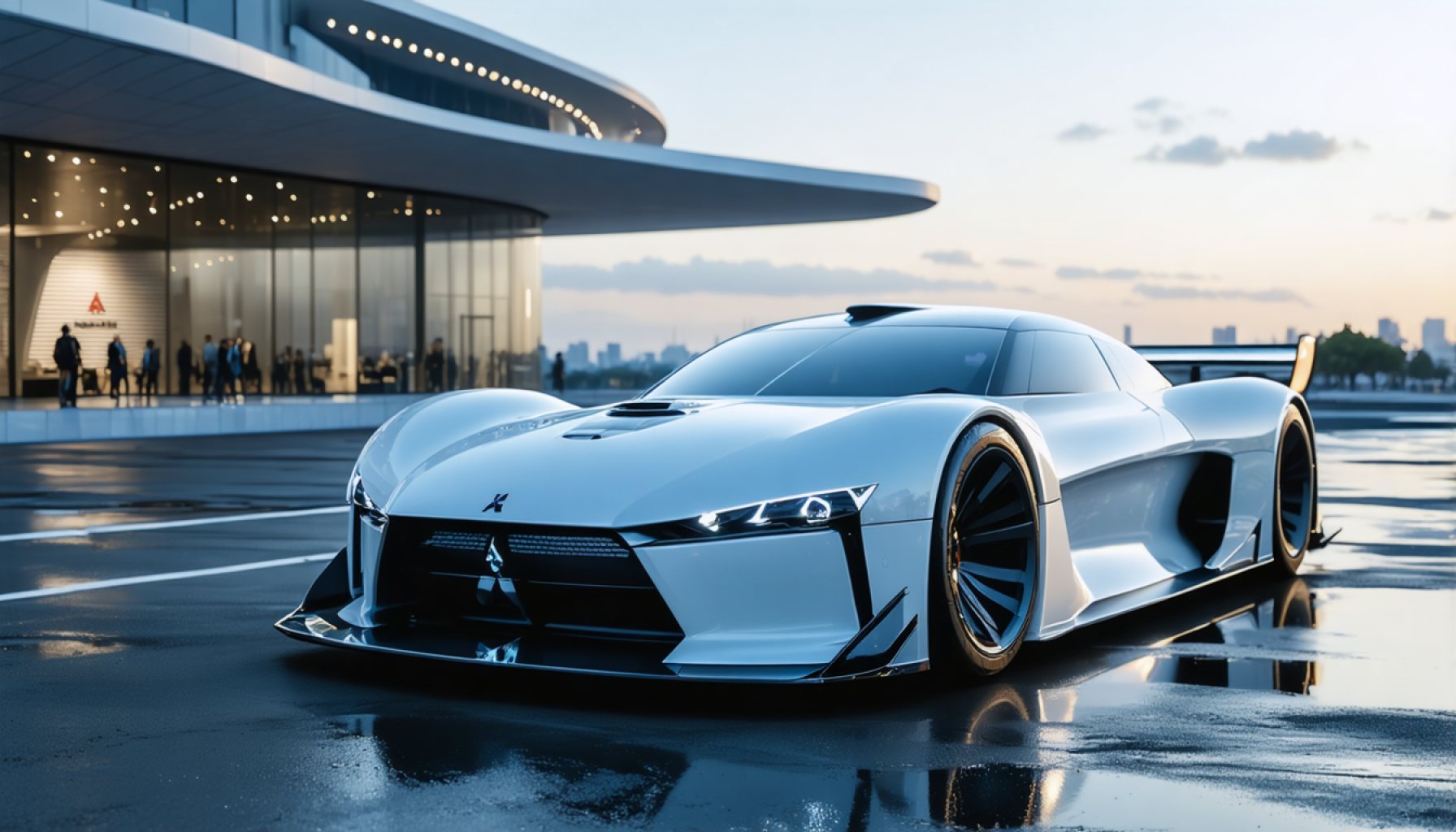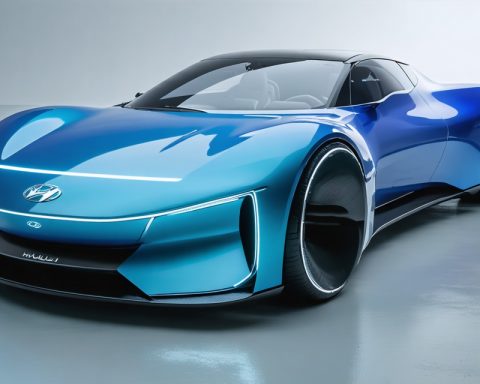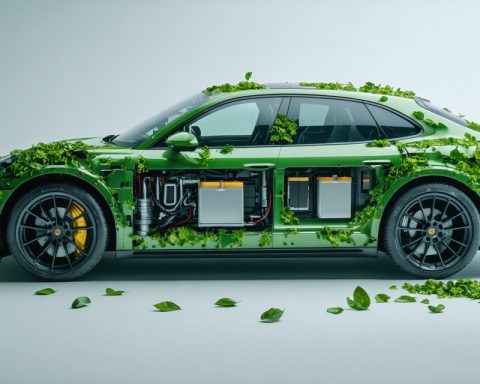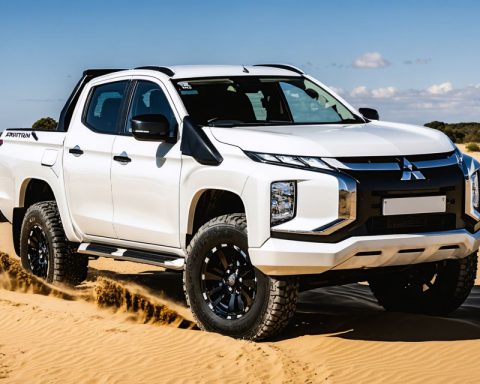- Mitsubishi is renowned for its sleek vehicles and a legacy rich in innovation and resilience.
- Founded in the early 1900s, Mitsubishi initially focused on shipbuilding before diversifying into aircraft, heavy industries, and finance.
- In the automotive realm, Mitsubishi challenged norms with iconic models like the Mitsubishi Lancer Evolution, a leader in rally racing.
- The company has consistently adapted to economic shifts, emphasizing quality and sustainability.
- Mitsubishi is a pioneer in hybrid technology, notably with its Outlander PHEV, representing a commitment to eco-friendly innovation.
- The brand illustrates the power of change and diversity, blending heritage with cutting-edge advancements.
When the name “Mitsubishi” comes to mind, it often evokes images of sleek cars and robust SUVs cruising down the expressway. Yet, there’s a deeper story pulsing beneath the brand’s polished steel veneer—one of innovation, resilience, and a multidimensional legacy that transcends mechanical marvels.
Founded over a century ago, Mitsubishi Motor Corporation stands as a testament to human progress interwoven with thoughtful engineering and bold visions. Picture the early 1900s, where an ambitious young company ventured into shipbuilding, leveraging Japan’s industrial momentum. From these maritime roots, Mitsubishi soon diversified, diving into sectors like aircraft technology, heavy industries, and finance. This diverse portfolio not only fueled Mitsubishi’s growth but also established a reputation for adaptability and innovation that rivals few others.
In the automotive world, Mitsubishi has consistently challenged the status quo. Remember the dynamic Mitsubishi Lancer Evolution? Launched in the early 1990s, this vehicle didn’t just run the racetrack; it dominated it. The “Evo” became synonymous with rally racing magic, thrilling fans with precision and power. Crisp lines and aerodynamic prowess defined its form, while technological sophistication under the hood ensured unrivaled performance—making it a favorite among car enthusiasts worldwide.
Yet, what’s truly captivating about Mitsubishi is not just its products but its ability to bounce back from challenges, particularly amidst economic downturns and market shifts. The company’s resilience lies in its unwavering commitment to quality and sustainability. As the automotive world pivots towards greener solutions, Mitsubishi emerges as a vanguard with its innovative plug-in hybrid technology found in models like the Outlander PHEV, blending eco-friendliness with practicality.
Mitsubishi’s narrative teaches an essential lesson: embracing change and nurturing diverse capabilities can lead to extraordinary achievements. As they venture further into the realms of renewable energy and technology, Mitsubishi continues to remind us of the possibilities that lie at the intersection of heritage and innovation.
Takeaway: Mitsubishi’s story encourages us to harness versatility and resilience in an ever-evolving world. By looking beyond conventional pathways, we can build legacies—be it in business or broader pursuits—that withstand the test of time. Next time you spot a Mitsubishi gracefully navigating the roads, remember it’s not just a car; it’s a piece of a larger legacy, steering towards a promising future.
Unveiling Mitsubishi’s Multifaceted Legacy: Beyond the Automobile
Mitsubishi’s Diverse Heritage
The name “Mitsubishi” often conjures images of sleek cars navigating city streets, but the company’s legacy transcends the automotive industry. Founded over a century ago, Mitsubishi Motor Corporation is rooted in shipbuilding and has expanded into a myriad of sectors. This adaptability has not only sustained its growth but established Mitsubishi as a leader in innovation across various industries, from heavy machinery to finance.
Unpacking Mitsubishi’s Automotive Triumphs
Mitsubishi’s impact on the automotive world is profound. The Mitsubishi Lancer Evolution, affectionately known as the “Evo,” is a prime example. Launched in the early 1990s, the Evo’s dominance in rally racing is legendary. Its combination of sleek design, aerodynamic efficiency, and cutting-edge technology set the standard for high-performance vehicles. Car enthusiasts appreciate its blend of precision and power, making it a staple in racing circuits worldwide.
Pioneering Sustainability with Plug-In Hybrids
In response to an ever-increasing demand for eco-friendly transportation, Mitsubishi has made significant strides with its plug-in hybrid technology. The Outlander PHEV stands out, merging practicality with environmental responsibility. As a plug-in hybrid, it offers the flexibility of electric power for short drives and gasoline for longer journeys, providing both efficiency and sustainability.
Exploring Mitsubishi’s Future in Renewable Energy
Mitsubishi is not resting on its laurels. The company is actively exploring renewable energy technologies, ensuring its legacy includes pioneering efforts in sustainable innovation. With global trends shifting towards green energy, Mitsubishi’s investments in solar power, wind turbines, and energy-efficient equipment position it as a key player in crafting a sustainable future.
Market Forecasts and Industry Trends
The automotive industry is rapidly evolving, with electric vehicles (EVs) being front and center. Mitsubishi’s foray into EVs and plug-in hybrids aligns with market predictions indicating a significant increase in demand over the next decade. By investing in efficient and sustainable technologies, Mitsubishi remains competitive amidst industry giants.
Advantages and Limitations of Mitsubishi Vehicles
Pros:
– Innovative Technology: Mitsubishi vehicles are equipped with advanced technology, especially in hybrid models.
– Sustainability: A focus on eco-friendly solutions caters to the environmentally conscious consumer.
– Durability: Known for building reliable and durable vehicles.
Cons:
– Brand Recognition: While revered by enthusiasts, Mitsubishi lacks the market dominance of other major car manufacturers.
– Limited Model Range: Currently, Mitsubishi’s lineup is narrower than some competitors, potentially limiting consumer choice.
Tips for Mitsubishi Car Owners
1. Regular Maintenance: Keep your Mitsubishi in top shape with regular check-ups. Long-term reliability is a known strength.
2. Explore Hybrid Options: If considering a new vehicle, look into the Outlander PHEV for an eco-friendly choice.
3. Stay Informed: Keep abreast of Mitsubishi’s innovations, especially in renewable energy and hybrid technology.
Conclusion: Embracing Mitsubishi’s Legacy
Mitsubishi’s story is one of transformation and resilience. Its journey from shipbuilding to automotive innovation exemplifies the power of adaptability. The company’s commitment to sustainability and technological advancement continues to inspire. Next time you see a Mitsubishi on the road, remember it represents a long-standing legacy of ingenuity and forward-thinking.
For more information on Mitsubishi, visit the official Mitsubishi Motors website.






















